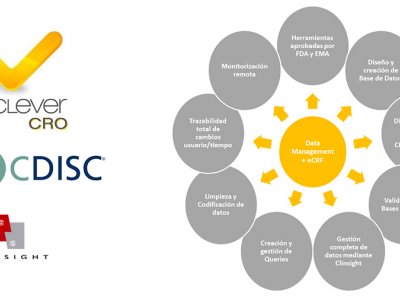CTMS: Ensuring effective management of your clinical trials
26-08-2023What does the CTMS include?
The CTMS is a solution that ensures transparency and unified access to the study information. This way, the study team can conduct their work while making the right decisions.
The CTMS promotes teamwork among the members of the study group. It allows collaboration among teams, such as the sponsor, the contract research organization (CRO), and the sites. Team members can work together on a single task for the same study, such as the start, knowing they all have access to the most updated information.
The CTMS is a specialized productivity tool that helps the team plan, track, and effectively monitor the study. For example, one of its features is to create electronic visit reports, automatically integrating the details of the visit (study, site, date, investigator, sponsor's name, etc.) and to automatically checking that all the required sections have been completed. Another would be the "Payment" feature, which allows you to create automatic follow-up records of the site's payments based on its contracts, as visits are checked as completed.
The CTMS promotes transparency to monitor critical phases in the management of a study, including the start of the trial, patient screening and enrollment, document collection, site visits, monitoring reports, patients' visit completion, or problem management, among other issues. Data panels and reports provide visual information and performance scores for a study or aggregated visits for several studies.
What requirements should a CTMS meet?
The CTMS must comply with data management regulations applicable to the European pharmaceutical industry: FDA 21 CFR Part 11 / EU GMP Annex 11. It was issued by the US FDA (Food and Drug Administration) in 1997 and aims to promote using electronic technology to replace paper documents for record-keeping processes. It sets forth the requirements to be met by electronic records to be deemed reliable and confidential at the same level as printed records. These controls include audit follow-up, electronic signature, data archiving, and user account controls:
The CTMS is a solution that ensures transparency and unified access to the study information. This way, the study team can conduct their work while making the right decisions.
The CTMS promotes teamwork among the members of the study group. It allows collaboration among teams, such as the sponsor, the contract research organization (CRO), and the sites. Team members can work together on a single task for the same study, such as the start, knowing they all have access to the most updated information.
The CTMS is a specialized productivity tool that helps the team plan, track, and effectively monitor the study. For example, one of its features is to create electronic visit reports, automatically integrating the details of the visit (study, site, date, investigator, sponsor's name, etc.) and to automatically checking that all the required sections have been completed. Another would be the "Payment" feature, which allows you to create automatic follow-up records of the site's payments based on its contracts, as visits are checked as completed.
The CTMS promotes transparency to monitor critical phases in the management of a study, including the start of the trial, patient screening and enrollment, document collection, site visits, monitoring reports, patients' visit completion, or problem management, among other issues. Data panels and reports provide visual information and performance scores for a study or aggregated visits for several studies.
What requirements should a CTMS meet?
The CTMS must comply with data management regulations applicable to the European pharmaceutical industry: FDA 21 CFR Part 11 / EU GMP Annex 11. It was issued by the US FDA (Food and Drug Administration) in 1997 and aims to promote using electronic technology to replace paper documents for record-keeping processes. It sets forth the requirements to be met by electronic records to be deemed reliable and confidential at the same level as printed records. These controls include audit follow-up, electronic signature, data archiving, and user account controls:
- The CTMS must create a complete audit trail for all data changes made in the system, including who did it, when, and baseline and amended values.
- It must create a space to store any records that had to be deleted in case a subsequent review is required. Archived data should be easily retrievable, while deleted and archived data in that space should not. The CTMS should include a protection system against unintentional or malicious attempts to delete data from the system.
- It should support electronic signatures for the relevant records based on the study's regulatory requirements. Document management and electronic visit reports are relevant and should be compatible with electronic signatures, even if regulatory agencies do not allow such signatures.
- The CTMS must request authorization and authentication from any users accessing the system and should have controls on password expiry, inactive session expiry times, and inactive account blockage.




